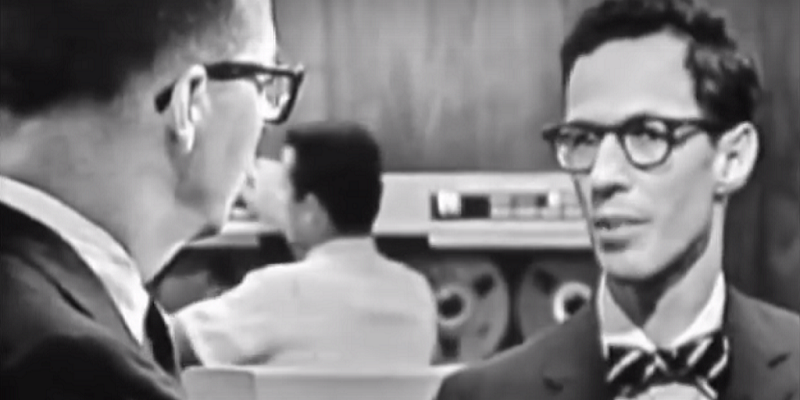MIT Computer Timesharing in the 1960’s by Erick P. '17
an extremely influential solution to computer bottlenecks

MIT science reporter John Fitch interviewing computer science professor Fernando J. Corbato at the MIT Computation Center in 1963.
Today, in my 15.565 Digital Evolution: Managing Web 3.0 class, we learned of the philosophy behind cloud computing. Cloud computing is the means by which data is stored, accessed, and shared across a network of servers on the Internet rather than on your personal computer. Think “Dropbox” and even “Google”. We learned that this mode of computing is not all that different from a similar concept called computer timesharing back in the 60’s, although that looked at solved a different computing problem. In the 1960’s, computers only came in three sizes: large, really large, and giant. And the prices were super expensive. There were no “personal computers” and so in the workplace you would have to reserve a time slot to use the big office computer, bring all of your files down to it, do what you needed to do, then get off and let the next person on. MIT helped advance a solution in the 1960’s called timesharing. Utilizing an IBM7090 High Speed General Purpose Digital Computer, different consoles in laboratories and people around New England were set up that allowed hundreds of people to share the same computer to do computations without leaving their seat, drastically boosting productivity and solving one of the largest computer bottleneck issues of the time.